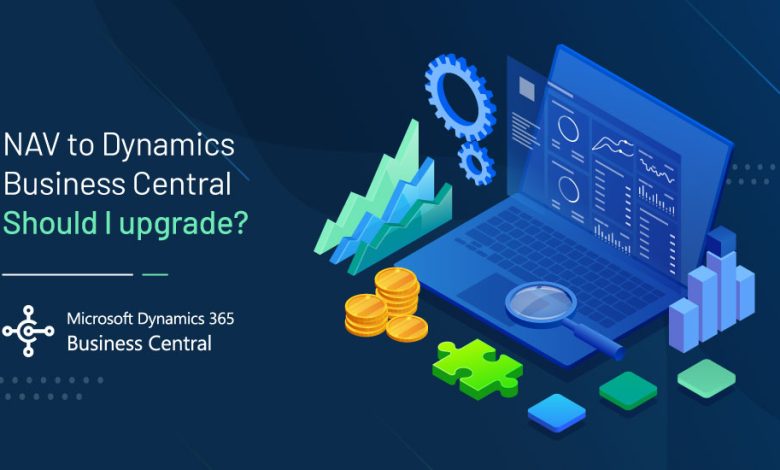Why Businesses to should Migrate from Dynamics NAV to Business Central

Both Microsoft Dynamics 365 Business Central (or D365BC) and Dynamics NAV come stacked with advanced financial tools and smart reporting applications that help enhance business functionalities across the enterprise. One of the main differences is that Dynamics NAV works on-premise, while D365BC manages everything in the cloud, allowing users to leverage the additional benefits the legacy system does not support.
Starting 2023, Microsoft is suspending the extended support for NAV and encouraging users to upgrade to Business Central. Because of various overlapped features, businesses can port the on-premise systems to the cloud and resume business as usual. The truth, however, is NAV to D365BC migration can be complex.
Businesses need to understand how the upgrade process works and why to start migrating right now.
Why Upgrade from Dynamics NAV to D365BC?
For existing NAV users, upgrading to D365BC might seem more like a requirement for managing the business than a strategic decision. It, however, allows enterprises to access new opportunities that further enhance operations and improve customer engagements while minimizing costs. Here below are a few instances of what businesses can achieve by migrating:
- Unified System: D365BC unifies data in one central hub, allowing business functionalities, including finance, sales, marketing, operations, and supply chain management, to digitize and automate processes and workflows.
- Enhanced Reporting: Artificial Intelligence or AI enabled Business Central (or BC) provides easy access to critical insights in the cloud that help users make the right and prompt decisions.
- Embedded Intelligence: Dynamics 365 BC allows businesses to leverage AI and Machine Learning or ML capabilities, including forecasting, targeted ad campaigns, and equipment monitoring, not available through NAV.
- Improved Collaboration: D365BC is accessible from any device or location and integrates seamlessly with Microsoft productivity tools, including Teams, Office 365. Enterprises may use functionalities like Power BI to align the teams around critical objectives. Users can also define metrics and KPIs while generating progress scorecards for the set business goals.
These benefits are only possible with a smoother migration and flawless implementation while enterprises continue focusing on optimizing the critical business functionalities.
Elements of Migration Process
Before executing the NAV to BC migration plan, organizations need to consider several factors, including defining business goals, identifying core needs, customizations, ISV (or independent software vendor) integrations, state of available data, existing NAV version, and a lot more.
Upgrading from NAV to Dynamics Business Central
While migrating from NAV 2015 or later, users need to perform an indirect, two-stage update wherein the first step includes an upgrade from NAV to Business Central–on-premises (version 14), and then migrate to the cloud version.
There are, however, a few additional steps for upgrading an older NAV version. Users first need to upgrade to an earlier release of on-premise Business Central, then upgrade to version 14 before moving to a technical upgrade to the cloud. The multi- step process is quite complex and includes various prerequisites, conversions, and configurations.
- Address Conflicting Codepages: This can prevent certain characters from appearing in captions and restrict access to the upgraded database. To resolve the issue, Microsoft suggests adding translated strings.
- Convert V1 Extensions to V2 Extensions: Source Code conversion from V1 to V2 requires a Txt2Al Conversion Tool that translates extensions to AL syntax, allowing users to develop and test extensions in Visual Studio Code.
- Upgrading Application Codes: This helps merge customized codes implemented across different application versions and databases before migrating to BC for an assured unified experience.
Once through executing the above steps, users can now initiate data upgrade process of converting NAV data to Business Central’s field structure and table formats.
Final Thoughts
Upgrading from NAV to Business Central is complicated, as it includes numerous reconfigurations, code conversions, and a two-tiered migration process. Users, however, may skip the migration and jump to full implementation that will allow them to select the relevant data sets and take full advantage of the new features.
Business Central experts at Dynamics Square understand the nuances of NAV, Business Central on-premises, and the latest version of the cloud-based ERP. Reach us Today! and learn more about our processes, services, and how we can help.




